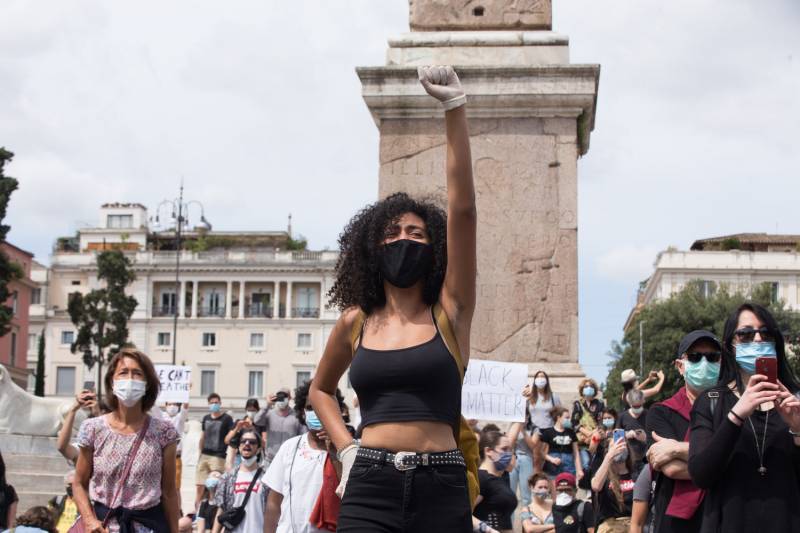But it’s clear that a key ingredient for transmission is present at many of these rallies: close contact. The images of protesters standing shoulder to shoulder—some wearing face masks, others not—raise concerns, especially in cities with higher rates of infection.
To that end, Tedros recommends that protesters follow the guidance of local health officials and take precautions to protect themselves from the novel coronavirus. “We encourage all those protesting around the world to do so safely,” he said, “Clean your hands, cover your cough and wear a mask if you attend a protest.” He also advised people to maintain a safe distance from others—and to stay home if they are sick.
“The riskiest situation to be in is to be in close proximity to a case, particularly a symptomatic case, of COVID-19,” said Michael Ryan, director of WHO’s health emergencies program at the Monday press conference, so healthy people protesting next to one another may not meet the definition of coming in contact with the disease.
However, it’s become clear to researchers that the new coronavirus can be spread by people who aren’t showing symptoms of it. “Local public health official[s], on the basis of abundance of caution, could advise people either to quarantine or to get tested [after attending a mass gathering],” Ryan said.
Local officials have expressed similar worries about the interplay of the protests and the pandemic. Last week Washington, D.C., Mayor Muriel Bowser said she was concerned about what mass gatherings in the streets “could mean for spikes in our coronavirus cases later.” She urged protesters to consider their exposure and consider being tested.
Denver Mayor Michael Hancock announced free tests for demonstrators. Officials in Atlanta and New York have suggested testing as well.
“Testing everyone that participated in demonstrations would be useful in communities where many new cases are being reported every day. These new cases indicate that transmission is occurring at a high rate in the communities,” said Bill Miller, an epidemiologist and physician at Ohio State University.
He said an alternative to testing everyone would be active contact tracing. “With new cases, the tracers could ask about demonstration participation, including days and times,” Miller said. Then, if cases are linked to a demonstration, a call could go out to get everyone who participated in that event to be tested.
Being outdoors seems to reduce the risk of exposure because the virus can’t survive long in sunlight and there’s better air circulation, but it’s no guarantee against infection. Health experts warn that some activities linked with the protests—such as riding public transportation to attend rallies or getting arrested and jailed indoors with others—could increase a person’s risk of getting exposed to the virus.
Meanwhile, protests are expected to continue in the days ahead. George Floyd’s burial service will take place on Tuesday at a private service in Houston.
Copyright 2020 NPR. To see more, visit NPR.9(MDAxOTAwOTE4MDEyMTkxMDAzNjczZDljZA004))

9(MDAxOTAwOTE4MDEyMTkxMDAzNjczZDljZA004))

